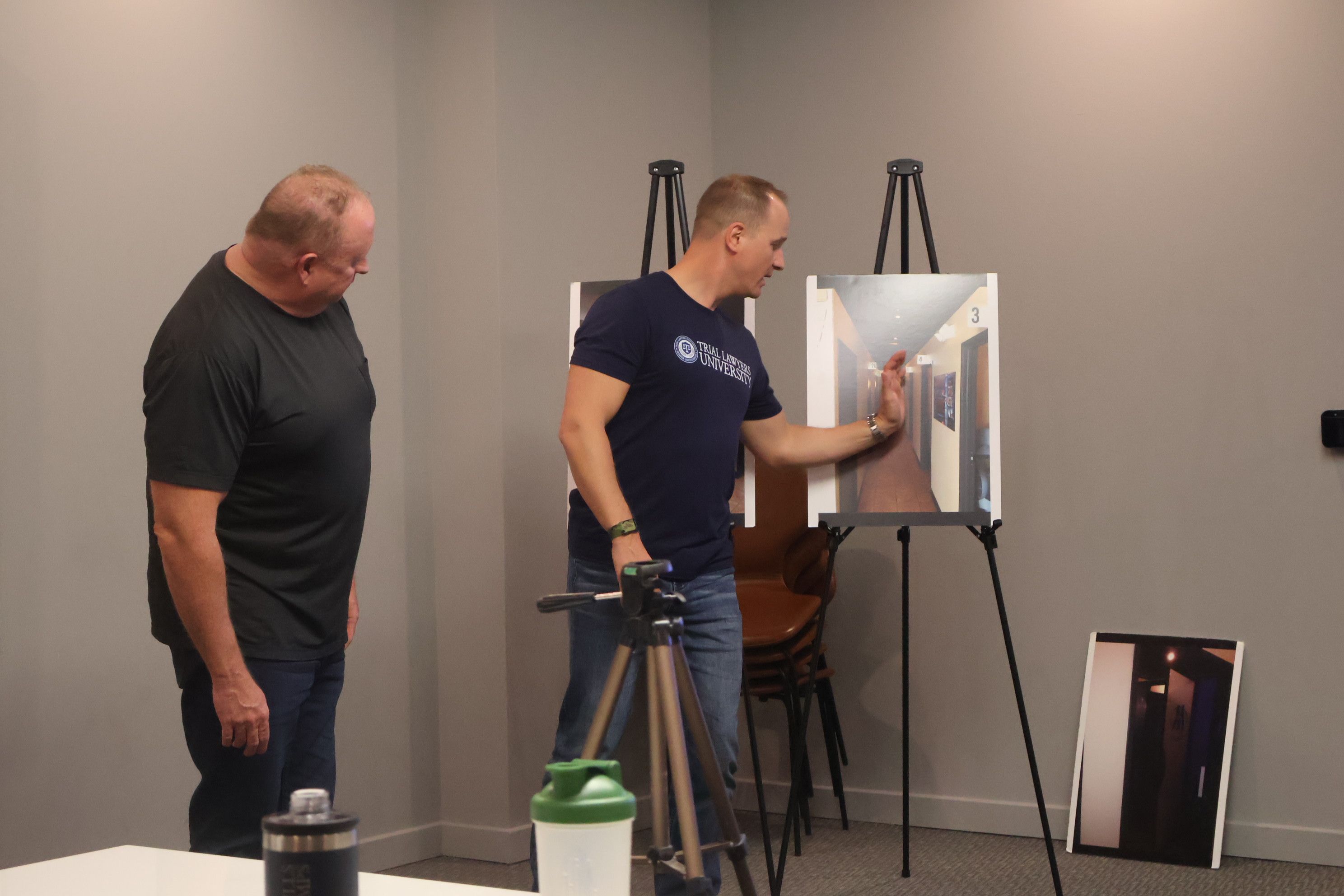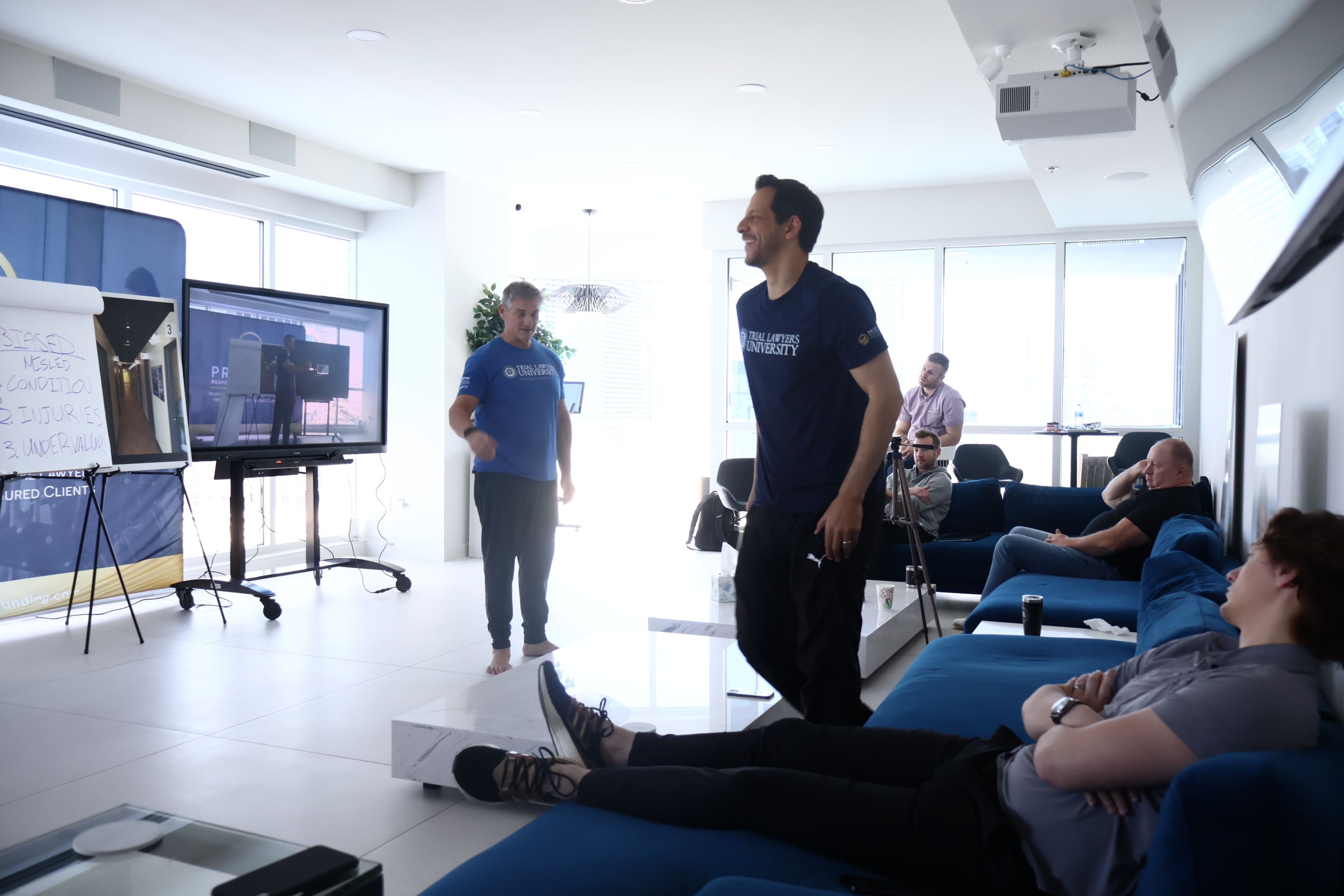I grew up in Birmingham, MI. I am the youngest of eight children and attended an all-boys catholic school my whole life until I went to college at the University of Michigan. I went to night school at Detroit College of Law. My dad, my uncle, two of my brothers, and sister were lawyers. My first job was cutting lawns at age 10. I started working for my brother as a house painter at age 12. When I was 16 I started my own painting business and continued throughout high school, college, and law school, and a few years after until I was 32. I practiced criminal defense for eighteen years in Michigan until ten years ago when my roommate from the Trial Lawyers College, Nick Rowley, encouraged me to move to LA to become a PI lawyer. The California Bar took me four tries. I moved to Las Vegas this past March. I have recently taken up pickle ball, skiing and golf. I also think I'm competitive at connect four, backgammon, chess, and ping pong.
TLU Performance Skills
sep 23 - 27, 2025 / 8:00 AM - 6:30 PM



sep 23 - 27, 2025
8:00 AM - 6:30 PM
About the bootcamp
Every case has a story. But it’s how you tell that story—your eye contact, emotional congruence, hand/ body movement, ultimately what we call "presence" — that influences whether you connect with jurors and whether they will connect with your version of the story. TLU Performance Skills is a 5-day, hands-on, skill-based training program designed to help trial lawyers master the physical, vocal, and psychological aspects of trial performance.
Led by Dan Ambrose and co-instructors Giorgio Panagos and Przemek Lubecki, this bootcamp focuses exclusively on delivery in trial and juror connection, not theory. Through cross-examination drills and opening statement presentation practice using an exemplar truck crash case, you’ll learn how to turn a one-dimensional narrative into a multi-faceted performance that engages your jury and brings the incident, your client’s damages, and their story to life. Not only will you become a more persuasive presenter, you’ll also become more relatable and credible so jurors will want you to win.
If you have eight participants in your location, we can bring the bootcamp to you. Please contact Dan for more information and scheduling at Dan@triallawyersuniversity.com.






testimonials

Robert Buzzard
The Buzzard Law FirmThe TLU bootcamps are great. Solid tools to help you see your blind spots in how you are coming across to the jury. You are forced to see yourself as a presenter, and given tools to present more effectively to the jury. The bootcamps have helped me become a better storyteller by helping me build habits so my countenance and postures don't come across as forced, but as natural extensions of my client's story.
What You Will Learn:
10 core trial presentation skills designed to help you form genuine connections with jurors, increase your credibility, and elevate your courtroom performance:
Eye Contact & Micro-Connecting
Build trust one juror at a time by learning to connect intentionally. As opposed to scanning the room, you'll make brief but real eye contact. Giving each individual eye connection time and space before moving onto another person. Never coming back to the same juror twice until you've had a moment with everyone.
Voice Control & Cadence
Rhythmically use pacing, pausing, and tone to move juror attention, emphasize key themes, and create emotional momentum throughout trial.
Facial Expression & Emotional Congruence
Being intentional with your expressions. Matching your face to your message, and using emotion to trigger empathy and mirror neurons in the jury.
Hand Gesticulation & Movement
Train your gestures to support—not distract from—your message. Learn and take home a guide of specific movements that align with pronouns, verbs, rhetorical questions, and group inclusion.
Glance Control
Guide jurors’ focus with your own gaze. Whether you’re using a flip chart, pointing to a visual, or referencing a witness—where you look tells them where to look.
Creating Space
Transport jurors into the story. Use spatial mapping to physically place people, moments, and memories in the room and anchor your story in jurors' minds.
Word Selection
Eliminate filler words. Use present tense, clean language, and inclusive phrasing that invites jurors into your perspective: “As we’ve just seen,” “Let’s go back to that moment.”
Economy of Words
Say more with less. Strip away the clutter and speak with precision to keep your delivery lean, clear, and impactful.
Listening
Connection is a two-way street. Learn how to listen—visibly—and honor responses from jurors and witnesses to show respect and build relational authority.
Acting & Stage Presence
You are a storyteller. Use the courtroom as your stage—move with intention, rehearse like an actor, and present your case with structure, rhythm, and command.
How You'll Train:
This is not a lecture. It’s a live performance lab where you’ll be coached, challenged, and refined in real time.
We begin with an exemplar cross-examination and opening statement from a trucking case to establish a shared baseline for instruction. By working from the same material initially, you'll be able to recognize patterns in performance, observe how others apply the same techniques, and clearly see how these micro skills are universally applicable—regardless of your case’s subject matter. Jumping straight into individualized cases would obscure that learning curve, so we use standardized materials first to maximize early breakthroughs.
Step 1 - Expert Cross-Examination Practice
Using the exemplar case, you’ll practice controlling defense witnesses with your body, voice, and pacing—while keeping the jury engaged throughout.
Step 2 - Presentation Skills Using an Exemplar Opening Statement
Perform an opening from the exemplar case and receive direct coaching on your delivery, emotional congruence, and connection with the jury.
Step 3 - Apply It to Your Own Case
Once core skills are locked in, you’ll perform your own opening statement and cross. You’ll integrate the techniques you've learned—now tailored to your client’s story—with feedback from instructors who understand what truly moves jurors.
Bootcamp Preparation
Participants must bring a case to work on, complete prep video assignments, and attend weekly Zoom meetings. You will record and review your presentations multiple times. This preparation ensures that you arrive ready to make the most of the bootcamp.
Your Instructors

Dan Ambrose
Trial Lawyers University
Giorgio Panagos
Ulysses LawI was born and raised in the San Francisco Bay Area to an Armenian mother and Greek father. I attended Berkeley High School, University of California, Riverside and Golden Gate University, School of Law. While in law school, I worked at my father’s chocolate shop in Palo Alto giving tasting tours and teaching customers about the history and production of the world’s finest cacao. After passing the CA bar in 2019, I moved to Los Angeles to practice personal injury law. Shortly after founding my own firm in 2021, I cofounded Lawzilla.co, a case referral marketplace where attorneys can find cases to grow their practices and refer cases they would otherwise drop. In addition to running my startup, I work closely with Trial Lawyers University, coaching attorneys on trial presentation skills. I speak fluent Greek and enjoy traveling, reading, spending time with family and playing piano.

Przemek Lubecki
Morris BartI was born in Poland and lived there until the end of second grade, when my family emigrated to what was then West Germany to escape communism. We lived in West Germany for two years before being granted political asylum in the U.S. – my dad’s ultimate goal – and got on a plane to St. Louis. I went on to college at Tulane University and law school at Loyola Chicago. I then hit the trial lottery and went to work for a Chicago defense firm that each year tried the most cases of any law firm in the state, and had a culture built around trying cases. I tried over 100 civil jury trials to verdict, and in 2006 was recognized by the Cook County Jury Verdict Reporter for having tried the 2nd-most jury trials in the state of Illinois. In 2012, I moved to New Orleans for an opportunity to do plaintiff’s work exclusively. Two years ago, I had my first 8-figure verdict, in no small part thanks to what I learned at TLU and from the great trial lawyers Dan Ambrose put me in touch with.
I fought in the Chicago Golden Gloves boxing tournament in the light-heavyweight and heavyweight divisions between 2005 and 2011. Since moving to New Orleans, I’ve taken up competitive pistol and rifle shooting and compete regularly across the country in the Elite Men’s division of The Tactical Games and currently hold an A-class ranking from the United States Practical Shooting Association in Carry Optics pistol. I live in New Orleans with my wife and three daughters, ages 8, 6, and 4.

